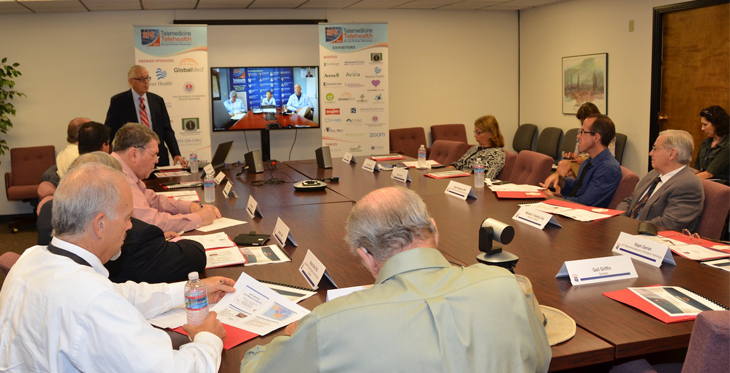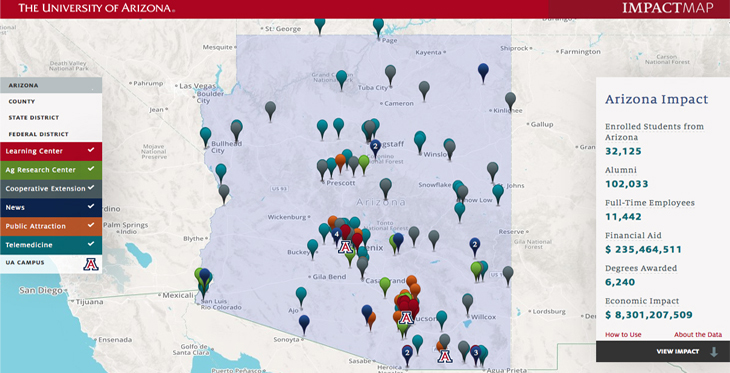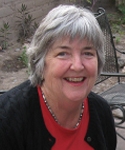The Arizona Telemedicine Program was established in 1996 with eight clinical sites around the state. Now, nearly 20 years later, the ATP has expanded to 160 sites.
As the numbers imply, this is a program whose impact has far exceeded expectations. In fact, on a map recently published by the University of Arizona, showing sites around the state where the UA has a presence, the ATP far outnumbers other programs.
Ronald S. Weinstein, MD, co-founder and director of ATP, points directly to the visionary folks – legislators, physicians, agency officials, hospital and insurance executives and others – who have committed their time and talent to the Arizona Telemedicine Council (ATC).
“We are dependent on the Council for their community input,” says Dr. Weinstein, former head of pathology at the University of Arizona, where the ATP is based. “The Arizona Telemedicine Council members keep our program abreast of needs and opportunities outside the walls of the university. We appreciate the limitations of what we can see from within the University.
“Collectively, the Council members have a panoramic view of what’s happening in health care. With members from public and private sectors, from government and the community, and as leaders with expertise that we need, we find the Arizona Telemedicine Council invaluable. It’s our secret sauce for success.”
The Council was the idea of former state Representative Bob Burns, who is co-founder of the ATP and a member now of the Arizona Corporation Commission working jointly with Dr. Weinstein. After attending a meeting on the potential of telemedicine and visiting the country’s first telemedicine program, under the direction of Jay Sanders, MD, in Augusta, Georgia, Burns connected with the late John Lee, the Arizona Legislature’s university budget analyst.
They approached James Dalen, MD, then dean of the UA College of Medicine, and sold him on the idea of basing a telemedicine program at the UA. Dr. Weinstein agreed to serve as director.
“We wanted a means of monitoring the program,” Burns recalls. “There was no bill; Lee said we didn’t need one. So we set up this ad hoc council where people – telemedicine users and those who were just interested – could come and go. The council meets quarterly, and Dr. Weinstein gives us a progress report and says this is what the plans are, and then it’s open to advisory input from members of the council.
“I think it puts a level of positive pressure on the program, which we appreciate,” says Dr. Weinstein.
It was at a meeting two years ago that Alan Pitt, MD, a radiologist with Barrow Neurological Institute, suggested the ATP would benefit from a robust social media campaign. (One result is the blog you’re now reading.)
“This is just one example of how the Council has helped us develop our vision,” Dr. Weinstein says.

Bruce Groll, a finance director for the Arizona Department of Education, has been with the Arizona Telemedicine Program and Council since the beginning; he was on John Lee’s staff in the Legislature.
According to Groll, “The Council has been very effective in terms of bringing together members of the medical community with people in state government with related health-care and education interests; with correctional facilities, representatives of tribal communities, and businesses such as UnitedHealthcare; and a great group of legislative folks who have helped enlighten our elected officials about the health-care needs of our state.”
As a result of the Council’s input, Burns says, “there have been several spin-offs from our original concept of providing medical services to rural communities. One of the big spin-offs is our continuing education component. Medical professionals tell me they really appreciate being able to take part in a continuing education program without having to leave their practice and drive to Tucson or Phoenix.”
Burns was the original chair of the ATC, and has attended all but two of its 71 – to date – quarterly meetings. “It’s an amazing record of civic leadership,” Dr. Weinstein says.
Says Burns, “I think it’s developed into a great program. I can’t believe not only the geographic expansion but all the technological things the program can do that it wasn’t able to do in the beginning. It’s a challenge to keep up with all the changes, but that’s the way it is with technology.
“We talked at the Council meeting in January about all the things a doctor can do with his cell phone. It’s mind-boggling.”

